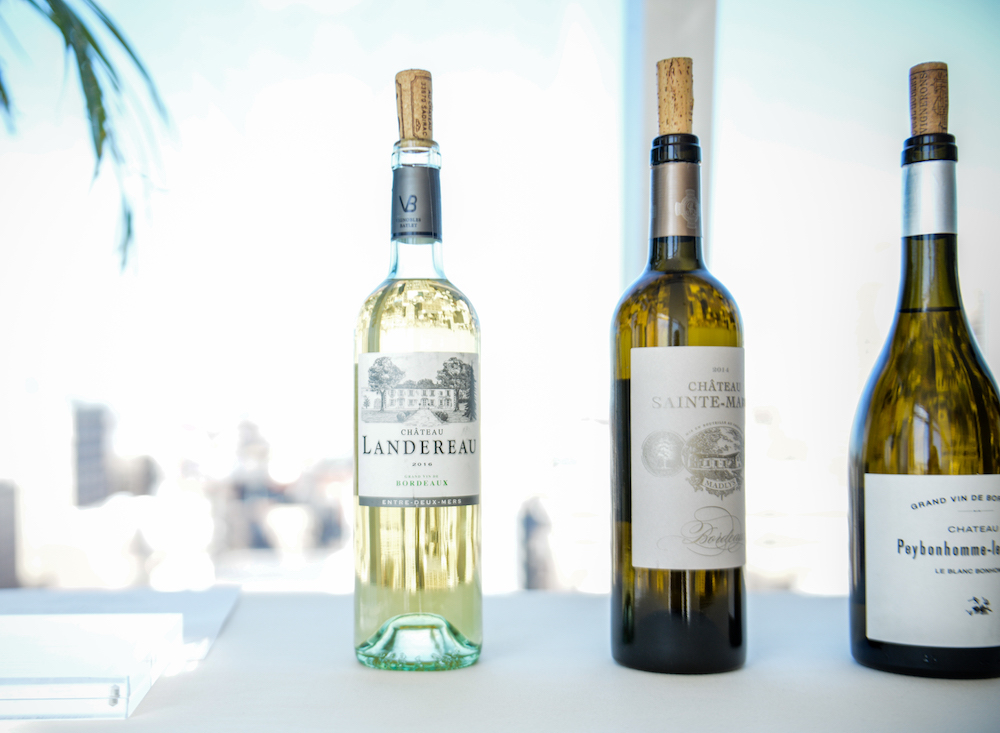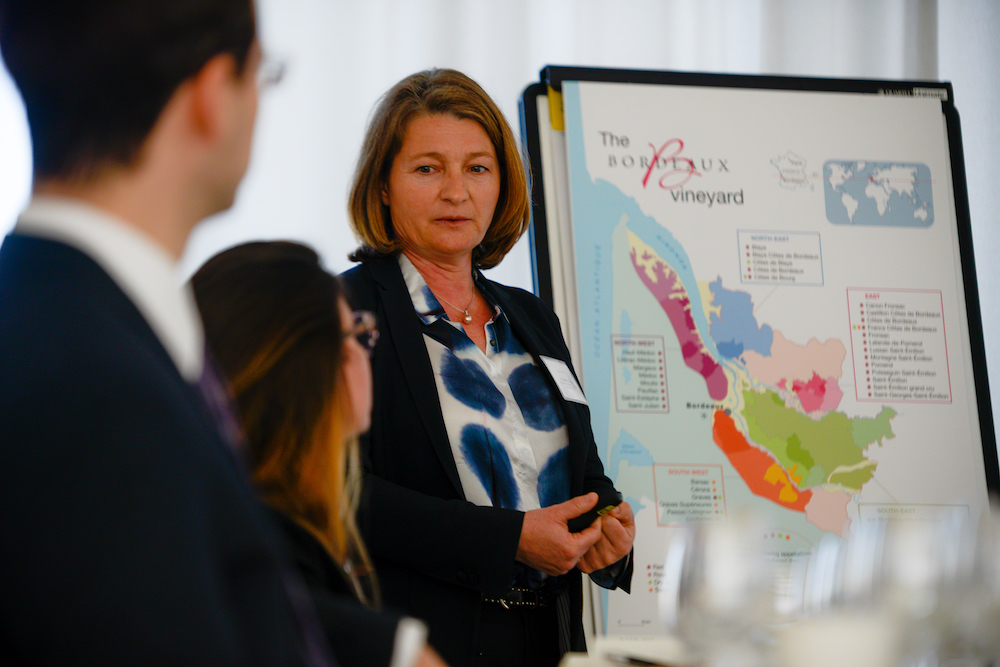Dry white wines from Bordeaux have performed consistently in the U.S., finding a fan base among consumers who venture beyond the region’s reds.
Bordeaux shipped about 290,700 cases of dry white wine to the U.S. in 2016. That’s par for the course. Annual America exports average about 300,000 cases, according to a recent seminar in NYC: The Art and Architecture of the Bordeaux Blanc Blend.
Those cases brought in about $27 million in sales in 2016. America is the third largest export market in the world for dry white Bordeaux, just behind the U.K. and Belgium. Globally, Bordeaux dry whites total about $150 million annually in sales.
Key varietals for this style are sauvignon blanc, sémillon and the mixing grape muscadelle. These grapes represent about 10% of the region’s overall growing area, or about 9,000 hectares. (For reference, Bordeaux reds comprise about 85% of the region’s production area.)

Traditionally these wines are blends of sauvignon blanc and sémillon. Recently the region has produced more straight sauvignon blancs. This plays into the single-varietal trend emerging worldwide. Consumers (especially in the U.S.) reach for single-varietal bottles because the branding and flavors are easy to understand.
When it comes to sauvignon blanc, describing Bordeaux’s is a matter of comparing Old World with New. This is not the boldly citrus and tropically fruity style of California — nor the strongly acidic, fruit-forward sauvignon blanc of New Zealand. Rather, these wines focus on subtlety, terroir and balance.
On the nose are chalkier, earthier notes, along with subtler traces of citrus, pear, peach and other white fruit. These flavors continue onto the palate, along with softer acids and a smoother integration of light oak (when there is aging). Subtle smokiness and minerality is common, as is a lower ABV than you normally find among New World variants.
Which to say that these Old World wines, as expected, are more terroir-driven than the fruit-forward counterparts from California, New Zealand, or elsewhere in the New World.
There are two main versions of Bordeaux dry whites. Bright, fresh, dry, young, unoaked wines that are refreshing and fruity — or wines that are fuller in structure, barrel-aged, delicate and meant for cellaring.
The 2017 dry white wine harvest in Bordeaux was high in quality, but low in quantity, according to wine/consultant researcher Valérie Lavigne. Estimates put the crop 30-40% below total hectoliters for the 2016 harvest. How come? The same damaging factors that affected so many Bordeaux vineyards last year: summer storms, and a late frost in April.

Lavigne believed the 2017 harvest had good acidity and bitterness, which should allow the wines to age well. The aromatics are also excellent for 2017, she added.
Before the 1970s, Bordeaux produced more white wines than red. That’s a stat unlikely to repeat anytime soon, but Bordeaux whites today continue to offer world-class quality and, compared with price points for Bordeaux reds, some of the best values from this region.
Kyle Swartz is managing editor of Beverage Dynamics magazine. Reach him at kswartz@epgmediallc.com or on Twitter @kswartzz. Read his recent piece How Australian Wine Has Evolved with the American Palate.




